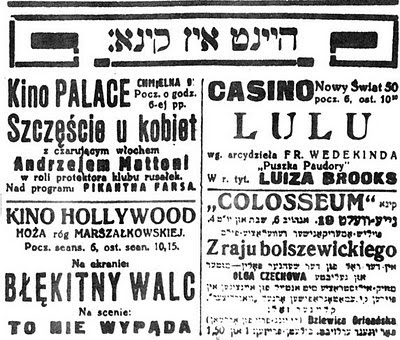Looking for something good to read? In search of that special gift for the silent film fan on your Holiday shopping list?
The Louise Brooks Society is pleased to let everyone know that for a limited time (Thanksgiving November 22 through Cyber Monday November 26, 2018) each of the following titles are available at a special discounted price. And what's more, the LBS will pay the tax and ship the book for free (within the United States). The LBS accepts PayPal and major credit cards through it's safe and secure PayPal account. Click on a button below to place an order. Want a special inscription? Place a note in your order, and we'll be happy to oblige.
Louise Brooks, the Persistent Star (softcover 1st edition)
by Thomas Gladysz
-- This new 296 page book brings together 15 years work by the Director of the Louise Brooks Society. Gathered here are the author's best articles, essays, reviews and blogs about the silent film star and her films: Beggars of Life, Pandora’s Box, and Diary of a Lost Girl are discussed, as are many other little known aspects of Brooks’ legendary career. With dozens of illustrations, many rare. AUTOGRAPHED by the author.
Regular price $22.50 // now just $19.00 (includes shipping & handling within the USA)
Beggars of Life: A Companion to the 1928 Film (softcover 1st edition)
by Thomas Gladysz
-- This first ever study of Beggars of Life looks at the film Oscar-winning director William Wellman thought his finest silent movie. With more than 50 little seen images, and a foreword by William Wellman, Jr. A must have addition to your library, and an essential companion to the KinoLorber DVD/Blu-ray. AUTOGRAPHED by the author.
Regular price $13.50// now just $9.00 (includes shipping & handling within the USA)
****************************
Now We're in the Air (softcover 1st edition)
by Thomas Gladysz
This companion to the once "lost" 1927 film tells the story of the film’s making, its reception, and its discovery by film preservationist Robert Byrne. With two rare fictionalizations of the movie story, more than 75 little seen images, detailed credits, trivia, and a foreword by Byrne. AUTOGRAPHED by the author.
Regular price $17.50// now just $14.00 (includes shipping & handling within the USA)
The Louise Brooks Society is pleased to let everyone know that for a limited time (Thanksgiving November 22 through Cyber Monday November 26, 2018) each of the following titles are available at a special discounted price. And what's more, the LBS will pay the tax and ship the book for free (within the United States). The LBS accepts PayPal and major credit cards through it's safe and secure PayPal account. Click on a button below to place an order. Want a special inscription? Place a note in your order, and we'll be happy to oblige.
Louise Brooks, the Persistent Star (softcover 1st edition)
by Thomas Gladysz
-- This new 296 page book brings together 15 years work by the Director of the Louise Brooks Society. Gathered here are the author's best articles, essays, reviews and blogs about the silent film star and her films: Beggars of Life, Pandora’s Box, and Diary of a Lost Girl are discussed, as are many other little known aspects of Brooks’ legendary career. With dozens of illustrations, many rare. AUTOGRAPHED by the author.
Regular price $
****************************
Beggars of Life: A Companion to the 1928 Film (softcover 1st edition)
by Thomas Gladysz
-- This first ever study of Beggars of Life looks at the film Oscar-winning director William Wellman thought his finest silent movie. With more than 50 little seen images, and a foreword by William Wellman, Jr. A must have addition to your library, and an essential companion to the KinoLorber DVD/Blu-ray. AUTOGRAPHED by the author.
Regular price $
****************************
Now We're in the Air (softcover 1st edition)
by Thomas Gladysz
This companion to the once "lost" 1927 film tells the story of the film’s making, its reception, and its discovery by film preservationist Robert Byrne. With two rare fictionalizations of the movie story, more than 75 little seen images, detailed credits, trivia, and a foreword by Byrne. AUTOGRAPHED by the author.
Regular price $
Looking for more great reads and more great deals?
Check out the "Related Books for Sale" Page.
Check out the "Related Books for Sale" Page.



























































